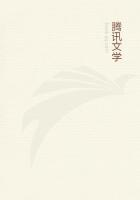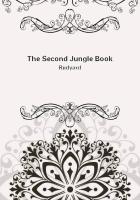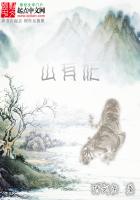The great reed of the south, the Arundo donax, is often used, in the country, for rough garden-shelters against the mistral or just for fences. These reeds, the ends of which are chopped off to make them all the same length, are planted perpendicularly in the earth. I have often explored them in the hope of finding Osmia-nests. My search has very seldom succeeded. The failure is easily explained. The partitions and the closing-plug of the Horned and of the Three-horned Osmia are made, as we have seen, of a sort of mud which water instantly reduces to pap. With the upright position of the reeds, the stopper of the opening would receive the rain and would become diluted; the ceilings of the storeys would fall in and the family would perish by drowning. Therefore the Osmia, who knew of these drawbacks before I did, refuses the reeds when they are placed perpendicularly.
The same reed is used for a second purpose. We make canisses of it, that is to say, hurdles, which, in spring, serve for the rearing of silk-worms and, in autumn, for the drying of figs. At the end of April and during May, which is the time when the Osmiae work, the canisses are indoors, in the silk-worm nurseries, where the Bee cannot take possession of them; in autumn, they are outside, exposing their layers of figs and peeled peaches to the sun; but by that time the Osmiae have long disappeared. If, however, during the spring, an old, disused hurdle is left out of doors, in a horizontal position, the Three-horned Osmia often takes possession of it and makes use of the two ends, where the reeds lie truncated and open.
There are other quarters that suit the Three-horned Osmia, who is not particular, it seems to me, and will make shift with any hiding-place, so long as it has the requisite conditions of diameter, solidity, sanitation and kindly darkness. The most original dwellings that I know her to occupy are disused Snail-shells, especially the house of the Common Snail (Helix aspersa). Let us go to the slope of the hills thick with olive-trees and inspect the little supporting-walls which are built of dry stones and face the south. In the crevices of this insecure masonry, we shall reap a harvest of old Snail-shells, plugged with earth right up to the orifice. The family of the Three-horned Osmia is settled in the spiral of those shells, which is subdivided into chambers by mud partitions.
Let us inspect the stone-heaps, especially those which come from the quarry-works. Here we often find the Field-mouse sitting on a grass mattress, nibbling acorns, almonds, olive-stones and apricot-stones.
The Rodent varies his diet: to oily and farinaceous foods he adds the Snail. When he is gone, he has left behind him, under the overhanging stones, mixed up with the remains of other victuals, an assortment of empty shells, sometimes plentiful enough to remind me of the heap of Snails which, cooked with spinach and eaten country-fashion on Christmas Eve, are flung away next day by the housewife. This gives the Three-horned Osmia a handsome collection of tenements; and she does not fail to profit by them. Then again, even if the Field-mouse's conchological museum be lacking, the same broken stones serve as a refuge for Garden-snails who come to live there and end by dying there. When we see Three-horned Osmiae enter the crevices of old walls and of stone-heaps, there is no doubt about their occupation:
they are getting free lodgings out of the old Snail-shells of those labyrinths.
The Horned Osmia, who is less common, might easily also be less ingenious, that is to say, less rich in varieties of houses. She seems to scorn empty shells. The only homes that I know her to inhabit are the reeds of the hurdles and the deserted cells of the Masked Anthophora.
All the other Osmiae whose method of nest-building I know work with green putty, a paste made of some crushed leaf or other; and none of them, except Latreille's Osmia, is provided with the horned or tubercled armour of the mud-kneaders. I should like to know what plants are used in ****** the putty; probably each species has its own preferences and its little professional secrets; but hitherto observation has taught me nothing concerning these details. Whatever worker prepare it, the putty is very much the same in appearance.
When fresh, it is always a clear dark green. Later, especially in the parts exposed to the air, it changes, no doubt through fermentation, to the colour of dead leaves, to brown, to dull-yellow; and the leafy character of its origin is no longer apparent. But uniformity in the materials employed must not lead us to believe in uniformity in the lodging; on the contrary, this lodging varies greatly with the different species, though there is a marked predilection in favour of empty shells. Thus Latreille's Osmia, together with the Three-horned Osmia, uses the spacious structures of the Mason-bee of the Sheds;she likes the magnificent cells of the Masked Anthophora; and she is always ready to establish herself in the cylinder of any reed lying flat on the ground.
I have already spoken of an Osmia (O. cyanoxantha, PEREZ) who elects to make her home in the old nests of the Mason-bee of the Pebbles.
(Cf. "The Mason-bees": chapter 10.--Translator's Note.) Her closing-plug is made of a stout concrete, consisting of fair-sized bits of gravel sunk in the green paste; but for the inner partitions she employs only unalloyed putty. As the outer door, situated on the curve of an unprotected dome, is exposed to the inclemencies of the weather, the mother has to think of fortifying it. Danger, no doubt, is the originator of that gritty concrete.

